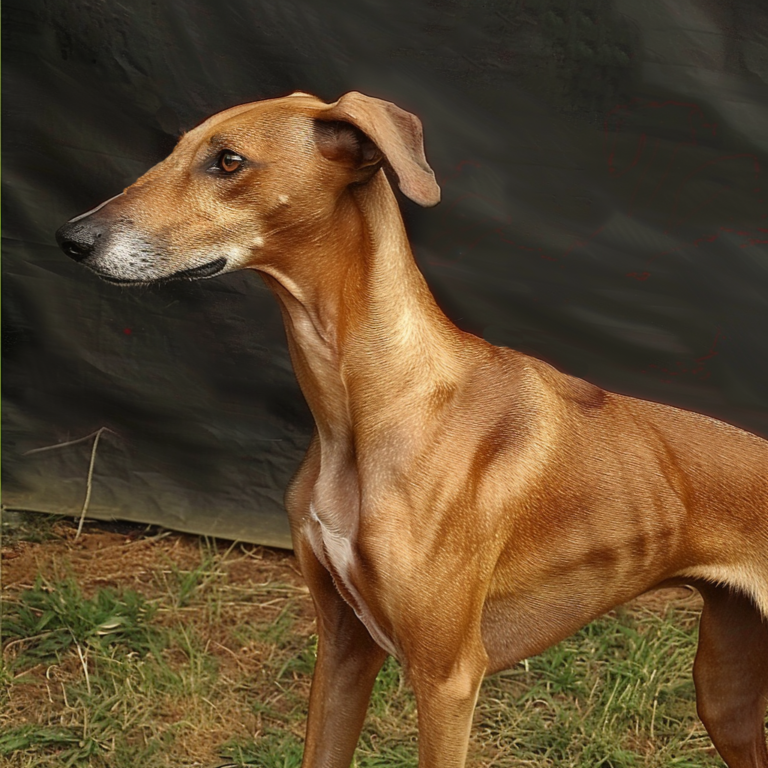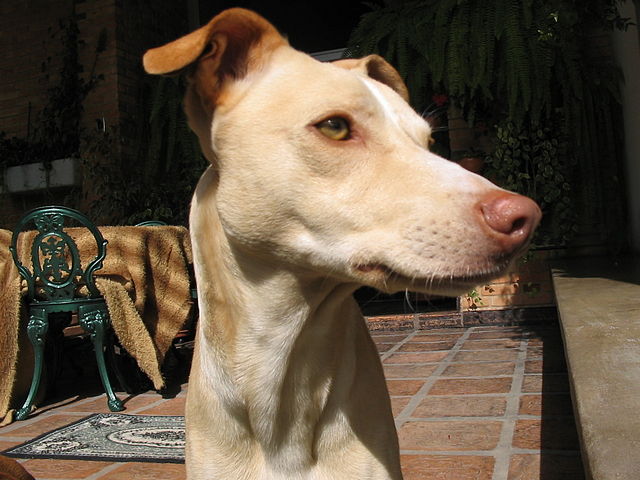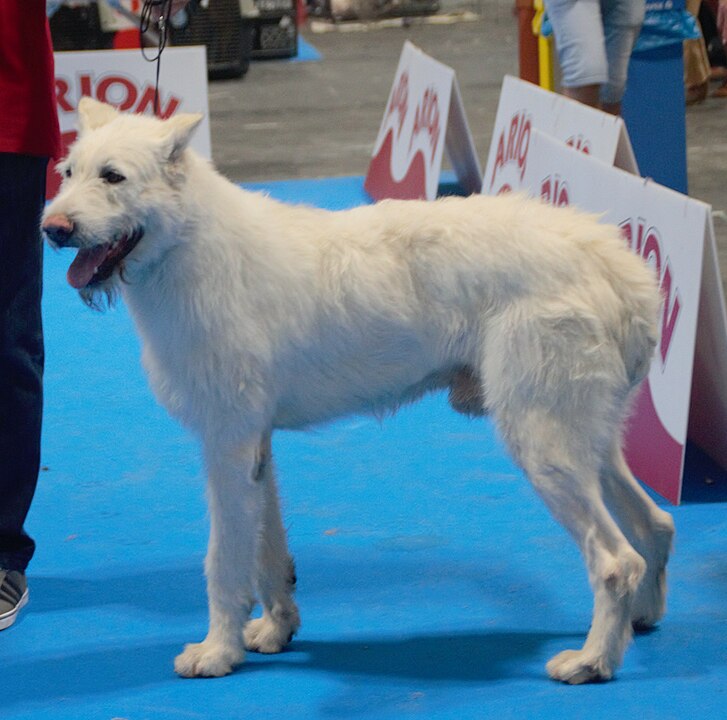The Rhodesian Ridgeback gets his name from the strip of hair running backwards along his spine. There are only a small handful of breeds that possess this trait, and the Rhodesian is the only one which is AKC recognized. Powerful and courageous, these dogs were bred in Africa to be all-purpose guarding/hunting/herding/trailing dogs, although their most famous occupation was to hunt down lions! As strong and brave as they are, however, they are gentle and polite in the home. This breed is unwaveringly loyal to their owners and trustworthy with children, although somewhat aloof to strangers.
They have been classified both as a scenthound as well as a sighthound, depending on the registry. Although they possess many features of other breeds from the sighthound family, they are characteristically unique. They are very quiet and hardly bark, a common sighthound trait. Another trait from this group – they manage their energy in spurts. They may spend a short time racing in the yard as fast as they can go… only to come inside and lay around for most of the day. They also have a very high prey drive and will chase anything that moves. A fenced yard is definitely a requirement for a Ridgeback, because they will be out of their yard in an instant if they see something to chase!
Not generally a sighthound characteristic – give them a reason to protect their owners and they will give it their all. Protectiveness is an important trait of the breed, as one of the Ridgeback’s historical jobs was to guard hunters and family alike. This instinct is natural, and should not have to be trained. In fact, formal guard dog training is not recommended for these African dogs. Ridgebacks will also bark to alert you of an intruder, and when they do so – take note! They don’t normally bark unless they feel something is “off”.
Anyone who owns a Ridgeback must make sure that the dog gets trained. Without rules or structure, they could potentially become very difficult to live with. Breeds which are highly protective (such as this one) also have the added potential to become liabilities in the worst circumstances. Obedience training is a necessity! Ridgebacks are smart, but they are independent and often willfully stubborn. They need a lot of consistency in order to learn. It must be remembered that these are hunting dogs that weren’t bred to work with people. Although they need to be trained, it may be a slower process than some people might hope.
Grooming a Ridgeback is a breeze! Their short coat sheds very little, and they only need an occasional brushing and even more infrequent bathing. What’s more, they don’t normally tend to have much of a doggy odor, nor do they drool. Taking care of nails and teeth, as well as cleaning ears, are easy tasks if they are done on a regular basis. For teething puppies and mature Ridgebacks alike, a Benebone is an absolute must-have to help keep teeth clean – https://amzn.to/410F5TG
Puppy Rhodesian Ridgebacks, although easy to housebreak, are known to be very destructive and crate training is highly recommended for times when they cannot be supervised. They have been known to completely ransack houses with their chewing! Mature adults almost always grow out of this (as long as they are trained), although they may accidentally cause some damage by clearing low coffee tables with their wagging tails. Not so accidentally, mature individuals might also wreck havoc while outside. Ridgebacks are known to be diggers, and some also enjoy ripping up bushes and small trees. Probably not the best choice for those with picture-perfect gardens… For a breed like the Rhodesian Ridgeback, we suggest the Petmate Vari Kennel for its ideal size and durability – https://amzn.to/3B3CUE6
The Ridgeback loves to eat, and owners must be careful not to overfeed. Some are also masters at counter-surfing as well as opening cupboards and will grab whatever they can find. Luckily… the breed tends to have a “stomach of steel” and usually isn’t affected too much by eating things he shouldn’t. This said, some foods are poisonous to all dogs and Ridgebacks are no exception. Making sure that he only eats his own food is still important.
With other dogs, it should be noted that male to male aggression is common. Keeping a male and female together will probably be fine, but two males may be a problem. Ridgebacks of either sex may be extremely defensive of strange dogs wandering onto their property. While some Ridgebacks can live with cats, this doesn’t apply to all members of the breed. Introductions must be done with care, and preferably while still a young puppy.
When it comes to exercise, Ridgebacks need a moderate amount. A good block of time running in the yard, supplemented by a long walk each day is usually enough. They are fairly good at adapting to many different situations and can be just fine in a number of different living circumstances. As with most breeds, however, the Ridgeback should never be confined only to the outdoors. Not only will he probably get himself into trouble, but he needs human companionship (plus, why get a dog if it only lives outside?).
Affiliate Disclaimer
As an Amazon Associate, I earn from qualifying purchases. This means that if you click on an affiliate link on this site and make a purchase, I may earn a small commission at no additional cost to you. Rest assured that I only link to products I have used, or use on a regular basis, and trust enough to recommend them to you!



